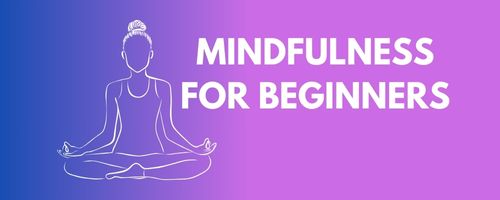
by Daily Intentional | Apr 26, 2024 | Mindfulness
“As you think, so shall you become.”
Visualization meditation, also known as guided imagery, invites you to embark on a journey within your mind. It’s a powerful technique that harnesses the creative force of your imagination to shape your reality. As you close your eyes and visualize vivid scenes, you tap into a wellspring of potential. Let’s explore this transformative practice and its benefits.
What Is Visualization Meditation?
Visualization meditation involves creating mental images in your mind’s eye. It’s like directing your own inner movie. By vividly imagining scenarios, places, and sensations, you activate your subconscious mind and set intentions for positive change.
Benefits of Visualization Meditation:
- Enhanced Focus:
- Visualization keeps your mind engaged and alert.
- It’s especially helpful for those who find traditional meditation challenging.
- Emotional Balance:
- Guided imagery cultivates emotional stability.
- It reduces stress, anxiety, and promotes inner calm.
- Creative Spark:
- Imagination fuels creativity.
- Visualization meditation sparks innovative ideas and solutions.
Techniques for Visualization Meditation:
- Inner Light Visualization:
- Imagine a radiant light at your heart center.
- Feel it expanding, filling your entire body with warmth and positivity.
- Nature Escapes:
- Visualize serene landscapes—forests, beaches, mountains.
- Engage your senses: smell the pine, feel the sand, hear the waves.
- Goal Manifestation:
- Picture your desired outcome vividly.
- See yourself achieving your goals—whether it’s acing an exam or landing your dream job.
Maximizing Your Visualization Practice:
- Consistency Matters:
- Dedicate time daily to visualization.
- Make it part of your morning or bedtime routine.
- Engage All Senses:
- Feel the grass beneath your feet, taste the imaginary fruit.
- The more senses you involve, the more potent the experience.
- Embrace Emotional Resonance:
- Feel the joy, relief, or excitement as you visualize.
- Emotions infuse life into your mental images.
Discover Your Imagination: Creative Visualization Book
Creative Visualization: Use the Power of Your Imagination to Create What You Want in Your Life by Shakti Gawain is your guide to harnessing the magic of visualization. In this timeless classic, you’ll discover:
- Meditations and Exercises:
- Techniques to create positive shifts in every area of your life.
- From career success to improved health, Gawain’s wisdom empowers you.
- Inner Mastery:
- Strengthen your self-esteem, overcome obstacles, and tap into your inner wisdom.
- Experience deep relaxation and vitality.
To learn more about creative visualization, we recommend purchasing Creative Visualization: Use the Power of Your Imagination to Create What You Want in Your Life by Shakti Gawain which is available at https://amzn.to/3w8Gw5o

by Daily Intentional | Apr 24, 2024 | Mindfulness
Mindful eating is more than a trend—it’s a transformative practice that invites us to slow down, savor our food, and appreciate the nourishment it provides. In a world of fast-paced meals and mindless munching, mindful eating encourages us to create a sacred ritual around our meals. Let’s explore how to infuse mindfulness into your dining experience.
The Ritual of Eating
Paying Attention to the Entire Eating Process
- Set the Scene:
- Before you even take a bite, create a peaceful eating environment. Dim the lights, light a candle, or play soothing music. Make your dining space a sanctuary.
- Gratitude Pause:
- Take a moment to express gratitude for the food in front of you. Acknowledge the effort that went into growing, preparing, and serving it.
- Mindful Bites:
- As you lift your fork or spoon, pay attention to the weight, texture, and temperature of the food.
- Chew slowly and savor each bite. Notice the flavors unfolding.
- Engage Your Senses:
- Look at your plate. Observe the colors, shapes, and arrangement.
- Listen to the sounds—the crunch, the sizzle, the softness.
- Pause Between Bites:
- Put down your utensils between bites. Breathe. Allow the flavors to linger.
- Notice any sensations in your body—hunger, fullness, satisfaction.
Sensory Exploration
Noticing Taste, Texture, and Aroma
- Taste:
- Close your eyes and take a small bite. Let it rest on your tongue.
- Is it sweet, salty, bitter, or umami? How does it evolve as you chew?
- Texture:
- Explore the texture. Is it crunchy, creamy, or tender?
- Appreciate the contrast between different components (e.g., crispy lettuce and juicy tomato).
- Aroma:
- Bring the food close to your nose. Inhale deeply.
- Aroma plays a significant role in our perception of taste.
- Mindful Pairings:
- Notice how different foods complement each other.
- Pairing a slice of apple with a piece of cheese? Pay attention to the interplay of flavors.
How Sensory Exploration Enhances Satisfaction
- Satiety Signals:
- When you engage your senses, your brain receives signals of satisfaction.
- You’re less likely to overeat because you’re attuned to your body’s cues.
- Mindful Portions:
- Smaller portions can be just as satisfying when you truly taste and appreciate them.
- Quality matters more than quantity.
Eating Without Distractions
Focusing Solely on Your Meal
- Put Away Devices:
- Multitasking during meals—whether it’s watching TV or scrolling through social media—distracts us from the experience.
- Create a no-phone zone during meals.
- Be Present:
- Bring your attention back to the food whenever your mind wanders.
- If thoughts arise (work, to-do lists), gently guide your focus back to the flavors and textures.
- Mindful Conversations:
- If you’re dining with others, engage in mindful conversations.
- Share your sensory experiences and appreciate the meal together.
Remember, mindful eating isn’t about rigid rules; it’s about cultivating awareness and joy around food. Whether you’re savoring a home-cooked meal or enjoying a restaurant dish, let each bite be an opportunity to nourish both body and soul. Bon appétit!

by Daily Intentional | Apr 23, 2024 | Mindfulness
Starting a mindfulness practice can be both exciting and daunting. As beginners embark on this journey, they often wonder where to begin and how to sustain their practice. Fear not! Let’s explore three foundational mindfulness techniques that will help you cultivate presence, reduce stress, and enhance well-being.
1. Breath Awareness: Anchoring Your Attention
Breath awareness is the cornerstone of mindfulness. It’s simple, accessible, and can be practiced anywhere. By focusing on your breath, you anchor your attention to the present moment.
How to Practice:
- Find a Quiet Space:
- Sit comfortably in a quiet room or a peaceful outdoor spot.
- Close your eyes if you feel comfortable doing so.
- Observe Your Breath:
- Pay attention to your natural breath without trying to change it.
- Notice the rise and fall of your chest or the sensation of air passing through your nostrils.
- Anchor Your Attention:
- Whenever your mind wanders (and it will!), gently bring it back to your breath.
- Imagine your breath as an anchor grounding you in the present.
Benefits:
- Stress Reduction: Focusing on the breath calms the nervous system and reduces anxiety.
- Improved Concentration: Regular practice enhances attention and concentration.
- Emotional Regulation: Breath awareness helps manage emotions by creating space between stimulus and response.
2. Body Scan: Cultivating Body Awareness
The body scan practice invites you to explore physical sensations systematically. It’s like giving your body a friendly check-in.
How to Practice:
- Lie Down or Sit Comfortably:
- Find a comfortable position, either lying down or sitting.
- Close your eyes and relax.
- Scan Your Body:
- Start at your toes and work your way up.
- Pay attention to each body part: toes, feet, ankles, calves, knees, thighs, and so on.
- Notice any tension, warmth, or coolness.
- Stay Curious:
- Approach your body with curiosity, as if meeting it for the first time.
- Release any tension you encounter.
Benefits:
- Relaxation: The body scan reduces physical tension and promotes relaxation.
- Body Awareness: Regular practice heightens your awareness of bodily sensations.
- Mind-Body Connection: It fosters a deeper connection between mind and body.
3. Mindful Walking: Moving with Awareness
Mindful walking is an opportunity to integrate mindfulness into your daily routine. It’s about being fully present as you move.
How to Practice:
- Choose Your Path:
- Find a quiet place to walk—a park, garden, or even your neighborhood.
- Remove distractions (put away your phone!).
- Walk Slowly and Deliberately:
- Pay attention to each step.
- Feel the ground beneath your feet.
- Notice the rhythm of your walking.
- Engage Your Senses:
- Observe the environment: colors, sounds, smells.
- Feel the air on your skin.
- Be present with each moment.
Benefits:
- Grounding: Mindful walking anchors you in the present, just like breath awareness.
- Stress Relief: Walking mindfully reduces stress and promotes relaxation.
- Connection to Nature: It deepens your connection with the natural world.
Remember, mindfulness is a practice—there’s no need to be perfect. Start with small moments throughout your day, and gradually expand. Whether you’re focusing on your breath, scanning your body, or walking mindfully, each step brings you closer to a more centered and aware existence. Happy practicing!

by Daily Intentional | Apr 23, 2024 | Mindfulness
Paying attention to what’s happening in the present moment can be challenging. Often, we find ourselves thinking about the future or dwelling on past events that we can’t change. But there’s a practice that can help us focus on the here and now: mindfulness.
Mindfulness involves becoming aware of what’s going on inside and around us—our thoughts, feelings, sensations, and environment—without judgment. It’s like observing these moments with curiosity, gentleness, and kindness. This practice has its roots in Buddhist meditation but has become more mainstream in recent years. You can find mindfulness programs in schools, workplaces, and hospitals.
Here are some health benefits of mindfulness:
- Reducing Anxiety and Depression: Studies have shown that mindfulness-based treatments can help reduce anxiety and depression. By staying grounded in the present, you can prevent your attention from getting hijacked by negative thoughts about the past or worries about the future. It’s like sitting on the riverbank and watching thoughts float by like leaves on a stream1.
- Lowering Blood Pressure: Mindfulness may help lower blood pressure. By practicing mindfulness regularly, you can improve your overall well-being and potentially reduce hypertension.
- Improving Sleep: Mindfulness has been linked to better sleep quality. When you’re mindful, you’re less likely to ruminate on stressful thoughts that keep you awake at night.
- Coping with Pain: Mindfulness can also help people cope with pain. By being present and accepting the sensations without judgment, individuals may experience less suffering.
Remember, mindfulness doesn’t have to be limited to sitting still or meditating in silence. You can integrate it into everyday activities like walking, eating, or interacting with others. So take a moment to breathe, observe, and be present—it’s good for your health!
For more information, you can explore these resources:
Feel free to share this article with others who might find it helpful!





